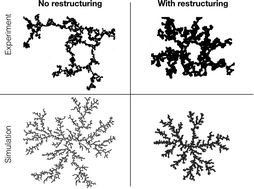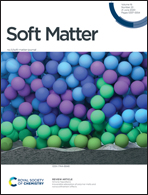Aggregation in viscoelastic emulsion droplet gels with capillarity-driven rearrangements
Abstract
Arrested, or partial, coalescence of viscoelastic emulsion droplets can occur when elastic resistance to deformation offsets droplet surface area minimization. Arrest is a critical element of food and consumer product microstructure and performance, but direct studies of structural arrest and rearrangement have been carried out using only two or three droplets at a time. The question remains whether the behavior of small numbers of droplets also occurs in larger, more realistic many-droplet systems. Here we study two-dimensional aggregation and arrested coalescence of emulsions containing ∼1000 droplets and find that the restructuring mechanisms observed for smaller systems have a large effect on local packing in multidroplet aggregates, but surprisingly do not significantly alter overall mass scaling in the aggregates. Specifically, increased regions of hexagonal packing are observed as the droplet solids level, and thus elasticity, is decreased because greater degrees of capillary force-driven restructuring are possible. Diffusion-limited droplet aggregation simulations that account for the restructuring mechanisms agree with the experimental results and suggest a basis for prediction of larger-scale network properties and bulk emulsion behavior.

- This article is part of the themed collection: Liquid Composites


 Please wait while we load your content...
Please wait while we load your content...
